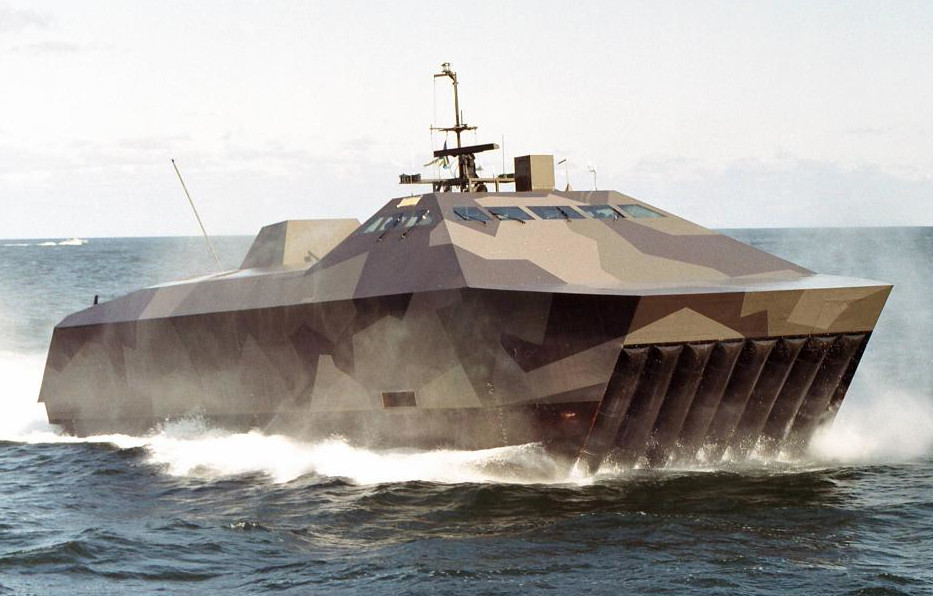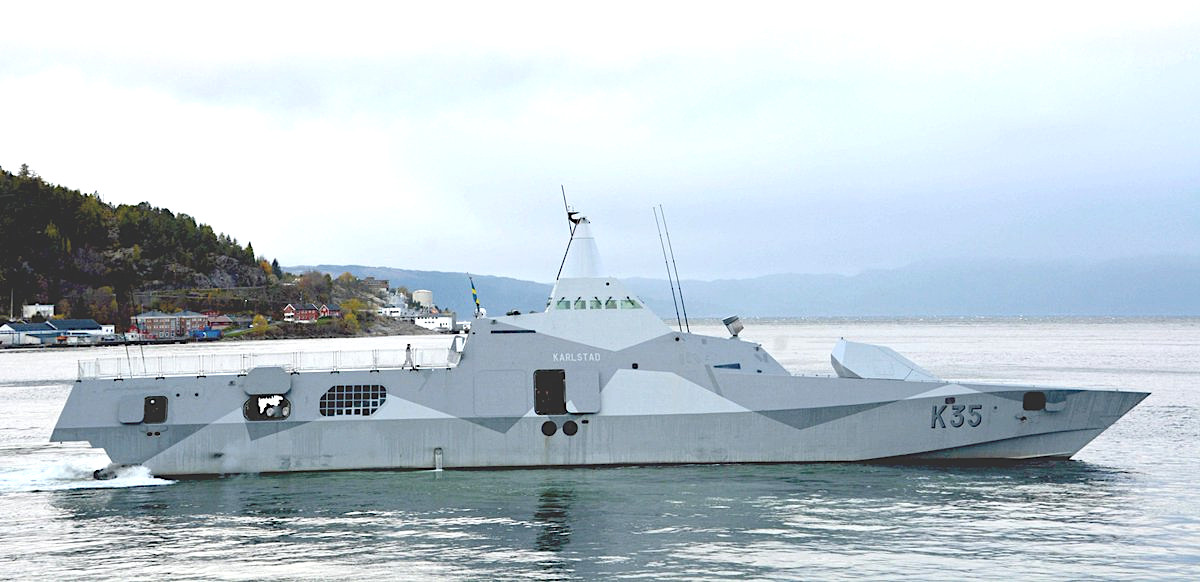It’s undeniable that the Swedish Navy’s stealthy Visby class corvettes are among the coolest looking warships in service today. A picture has now emerged online that reportedly shows just how impressive the design is at reducing the vessel’s radar cross-section, in addition to being simply aesthetically pleasing.
On Nov. 28, 2019, Reddit user u/Moresail posted a composite image showing one of Sweden’s five Visbys approximately one and a half miles off the bow of a cargo ship that they were on, as well as a shot of the screen of their vessel’s commercial Furuno X-band navigation radar. The corvette’s apparent radar signature is minuscule compared to that of another commercial vessel nearby.
“Demonstration of Visby corvette’s stealth 1.5M away on merchant marine x-band radar,” u/Moresail wrote along with posting the images. “Echo [radar return] 0.75M on our starboard bow is another cargo ship anchored next to us.”
You can find the pictures and the full discussion between u/Moresail and others about what one can deduce from it here.
“It’s similar to the radar cross-section of a small buoy, which is quite fascinating,” the Reddit user added in a separate thread. “The echo would sometimes almost disappear, but surprisingly ARPA (automatic radar plotting aid) was still able to determine a course and speed.”

Other Reddit users noted that the speck on the radar screen could also be mistaken for background clutter that the radar did not successfully filter out. It is fair to say that the corvette’s radar return as it appears on military-grade surface search or acquisition and fire control radars on other ships or aircraft flying overhead could very well be larger.
It is also very likely that the Visby class corvette in question was not traveling its most stealth configuration and may even have had radar reflectors fitted to help prevent accidents. Even so, the small size radar return seen in the picture on Reddit is impressive, especially for a ship design that Sweden first began building in the 1990s.
Sweden’s Kockums shipyard, now a division of Saab, laid down the future HSwMS Visby in 1995. Its design was heavily influenced by earlier work with the stealth test ship HSwMS Smyge, which the Swedish Navy had taken delivery of in 1990.

The 640-ton displacement Visby class ships have a so-called tumblehome hullform, which is found on other modern stealth warship designs, most notably the U.S. Navy’s Zumwalt class destroyers. This general shape, combined with other design elements, including faceted edges and the use of composite materials, offers significant radar reducing advantages.

The Visbys‘ hulls are made up primarily of a composite of carbon fiber and vinyl laminate over a PVC plastic core that Kockums says weights half as much as steel of equivalent strength while providing the additional radar-absorbing benefits. It also reportedly helps to acoustically insulate internal systems and reduce the ship’s thermal signature, making it difficult to detect using infrared sensors, as well.
The 57mm main gun on the corvettes is also hidden inside a radar-deflecting cupola when not in use. Its eight RBS-15 anti-ship missile launchers and four torpedo tubes are nestled inside the hull for the same reasons, as well. Various antennas and masts do dot the top of the ship, but there have been plans in the past to work on integrating flush-mounted antennas and other improvements to further mitigate the ship’s radar signature.
Each one of the ships also has a Rheinmetall Multi Ammunition Softkill System (MASS), which launches decoys to further blind and confuse optical sensors in the visible, infrared, and ultraviolet spectrums, as well as radars and laser range-finders. This would only help further conceal the vessel during an actual engagement.

The design, though certainly impressive, was also reportedly extremely complicated to build, with the entire program seeing significant delays and cost growth. Visby was officially commissioned in 2002, but in an initial configuration with limited capabilities.
The next year, the Swedish Navy formally accepted delivery
Visby, along with the second ship in the class, Helsingborg. The third example, Härnösand, arrived later that year, but the last two ships, Nyköping and Karlstad, were only commissioned in 2015. The purchase of a sixth member of the class, to be named Uddevalla, was canceled. By 2004, the average unit price for the ships was already reportedly approximately $184 million, or around $250.6 million in 2019 dollars.
For comparison, in the 2019 Fiscal Year, the U.S. Navy budgeted to buy three Littoral Combat Ships – a program that involves two different classes of ship, both of which have displacements around five times greater than the Visbys – for just under $524 million each, or around twice the price of a single one of Sweden’s stealth corvettes. Still, the high costs of the Swedish ships have come with real benefits in terms of reduced radar signatures.
“We are able to reduce the radar cross-section by 99 percent,” John Nilsson, one of the ship’s principal designers, told the BBC in 2004. “That doesn’t mean it’s 99 percent invisible, it means that we have reduced its detection range.”

The Visby class ships are also intended to fight in littoral areas where they would have the benefit of complex terrain to hide within.
“Naval officers fall in love with [this] ship. It’s not classically beautiful,” Nilsson added in his 2015 interview with the BBC. “In fact, it looks like a lunchbox. But it has better maneuverability and can achieve that level of stealth.”
We respectfully disagree with that description of the Visby design, but, either way, it seems hard to argue about the ship’s impressively stealthy qualities.
Contact the author: joe@thedrive.com
